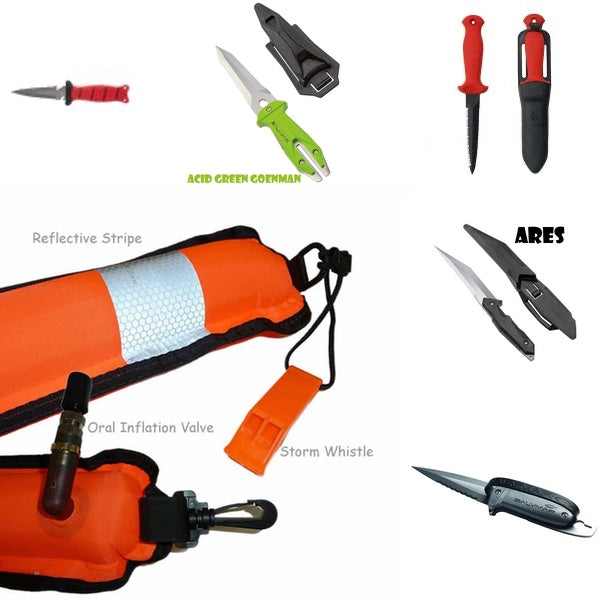
Safety Equipment for Diving - What You Need
Safety Equipment For In The Water
Safety equipment for diving is one of the most overlooked areas of dive gear. It usually takes a diver having a close call before they start to think seriously about safety. The reality is that safety should be every diver’s priority in the water, and we should always be thinking about how every piece of gear could help or hurt in an emergency situation. Additionally, there are a few pieces of gear that every diver should carry with them to ensure they are able to deal with common hazards in the water.
Dive Knives as Safety Equipment
A dive knife is one of the most important pieces of equipment that divers need to ensure their safety. Many new divers assume that dive knifes are important for defense against sharks or other predators. This is not the case, because if a predator has gotten close enough to be within the effective range of your dive knife, then you are in a lot of trouble. The reality of dive knife safety is that they protect us from entanglement hazards. Entanglement hazards are one of the greatest risks a diver faces in the water. Monofilament, nets, or a diver’s own shooting line are, in most situations, the greatest immediate risks in the water. Every diver should carry at least one knife with them in an accessible place to cut away entanglements.
Weight Belts
Most divers first get a weight belt for the buoyancy benefits, and many don’t even think of weight belts as safety equipment. As a diver, you should think of weight belts as almost disposable pieces of gear. They are great for getting a diver into sink phase on a dive, but they are just as important for being able to get to the surface. With a weight belt on, you are neutrally buoyant, but when you slam the quick release and drop the belt, you'll pop to the surface like a cork. If you are struggling on a dive and don’t think you will be able to reach the surface it is better to lose your belt than for your dive buddies to find you on the bottom. You should regularly practice being able to ditch your weight belt so the motion becomes second nature.
Other ways weight belts can be safety equipment is by choosing a color belt that helps your dive buddy see you at depth. White weight belts are great, because they are easy to see in the water from the surface. This is because white doesn't fall away with the color spectrum at depth.
